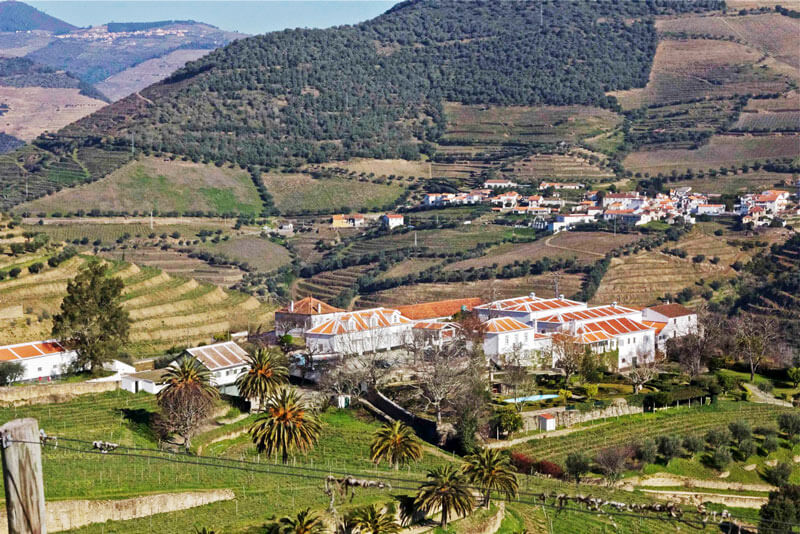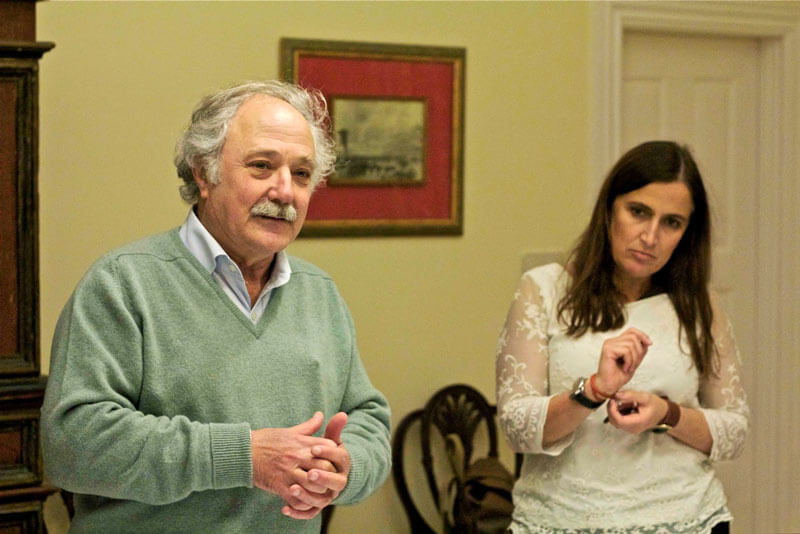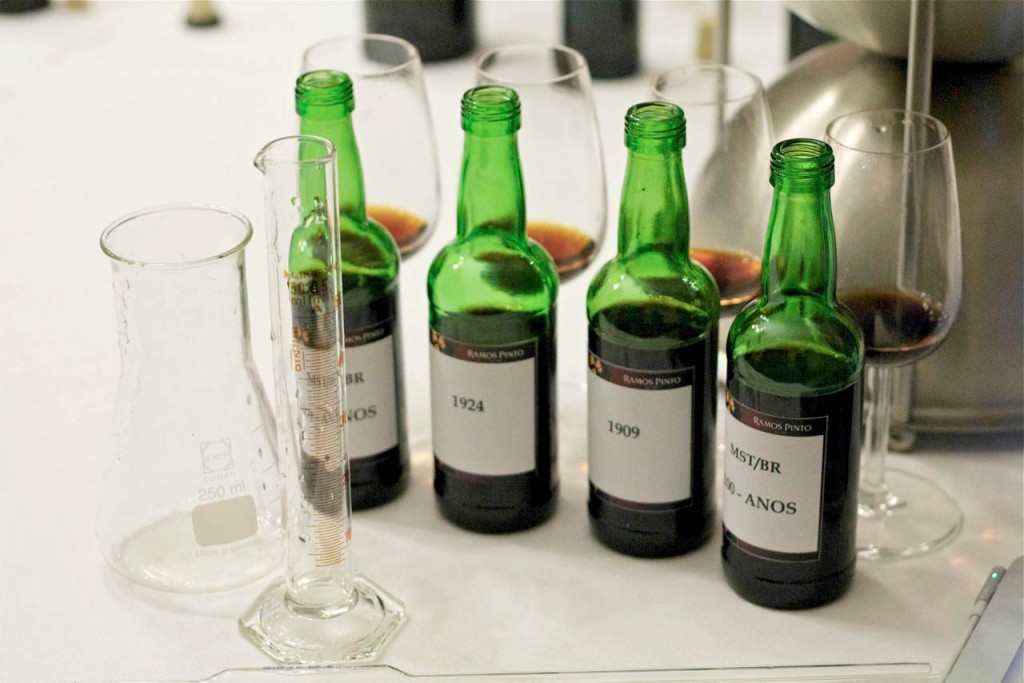Text Ilkka Sirén
Anyone who has visited the Douro Valley knows that driving there can be quite exciting, and by exciting I mean downright scary. But traveling in the valley, going up and down the hills and visiting vineyards is the best way to learn about the brutal hard work that goes into cultivating vines there. It’s easily one of the most beautiful wine regions in the world but at the same time one of the most labor intensive when it comes to actually making some vinho.
I was in a car going from the Vinho Verde Region towards the Cima Corgo to visit Quinta do Bom Retiro, an estate that belongs to Ramos Pinto. Instead of taking the path we came, and knew, we took a more “direct” route. Which turned out to take much longer. You’d think Portuguese of all people would know how to navigate (shout out to Ferdinan Magellan). Anyhow, when we finally arrived we were greeted by João Nicolau de Almeida, one of the great pioneers of port wine. His studies on the Douro grape varieties and planting methods, not to mention decades of wine making, have had a significant impact on the port wine scene. I was curious to meet him and get to know Ramos Pinto a bit better. Ramos Pinto was one of my first connections with port wine, ever since my wife brought home one of their semi-erotic posters. “Alegria” I believe it was called. And when your wife brings home a poster with naked women drinking port, you can’t say no, right? At the Quinta do Bom Retiro we quickly cleansed our palates with Champagne and continued with an interesting tasting with João and his cousin Ana Rosas who is a winemaker at Ramos Pinto. The subject for the evening: tawny port. On the table were their 10, 20 and 30-year-old tawnies with some cask samples that would go into making these wines. Enough to make my mouth water.

Quinta do Bom Retiro – Photo by Ilkka Sirén | All Rights Reserved
I think tawny ports are way too often overlooked. Many seem to be fixated on vintage ports and tawnies are somehow automatically considered as lesser wines. But I think if people would know what it really takes to make a great tawny port they might feel different. Take the 30-year-old tawny for example: we tasted cask samples dating back to 1909 and it’s wines like these that play a role in the final blend. Just the fact that you have been able to keep a wine for a century is nothing short of amazing, and to use that wine all these years later to make one kickass tawny port is pretty cool. It’s like the winemaker travels back in time to pick a certain wine that will balance the blend with its own unique character and make it perfect. “Vintage is a wine, tawny is a port wine”, João says and smiles. Don’t know about that but it certainly is the mother of all blends.

“Blending is like playing the piano, the components are the keyboard.” – João Nicolau de Almeida – Photo by Ilkka Sirén | All Rights Reserved
Consider this: the grapes come from Douro, OK. But here’s where it starts to get a bit complex. The grapes are usually sourced from several different vineyards that vary in size, location, soil, altitude, age, planting and farming methods, etc. Oh, and did I mention that the vineyards are planted with mixed varieties? That means there’s a bunch (many times an unknown amount) of indigenous varieties in one vineyard with different flavour profiles and ripening process. The grapes are then harvested, probably plot by plot and the harvest date obviously changes for each vineyard every year. Then the grapes are processed and vinified at the winery with different methods: from old school lagares to more modern stainless steel vats.
When you make a tawny blend and use wines that are 100-year-old you can be sure that the way of making wine has evolved through the years, although the fundamentals are pretty much the same. A hundred years ago temperature control was not what it is today. Then the wine will mature in wood that vary in type, size and origin. Over-oaked wines are terrible but it’s all about balance. Tawnies are heavily influenced by the barrel aging but the marriage between the wine and wood is usually well balanced. Now, the wine can stay in the barrels for any number of years as a vintage dated wine or it can be blended somewhere along the way. The final tawny doesn’t necessarily consist only of single harvest wines (colheitas), but can also have different batches of already blended wines. So, a tawny port is literally a blend of blends. In the end it’s the winemaker and/or master blender that takes all of these components, put them together and create the ultimate blend. It’s an interesting and powerful position to be in. Like making the Mona Lisa from a big puzzle of smaller paintings. That is the art of blending. This was a simple version, in reality it’s even more complex. It’s this kind of passion and craftsmanship that makes the port wines so great.

Cask Samples – Photo by Ilkka Sirén | All Rights Reserved
Here are some of the cask samples we tasted:
40-year-old: dried fruits with a distinct spiciness and a touch of vanilla, has a bit of that volatile nail polish remover aroma, elegant and extremely drinkable.
60-year-old: a big handful of caramel and nutty aromas, concentrated with lots of power but a nice acidity to balance it out.
1924: quite dense structure, sweet peppery notes with burnt sugar and hints of “come to mama!”. An outstanding wine with some serious sex appeal. Wow!
1909: a very inviting nose, almost perfume-like, reminds me of this sticky lollipop candy I used have when I was a kid. Beautiful aromas but lacking a bit of structure, but since it’s going to a blend it can get that extra kick of acidity from some other wine. There’s also this curious flour dough aroma coming through.
100-year-old: there’s a dessert in Portugal called “drunken pears”, pears soaked in brandy, this sort of reminds me of that. Maple syrup with a dash of cognac-like swag. The acidity is like a rusty chain saw in your mouth. Love it.
Contacts
Ramos Pinto Portugal
Av. Ramos Pinto, 380
4400-266 Vila Nova de Gaia
Portugal
Tel: (+351) 223 707 000
Fax: (+351) 223 775 099
E-Mail: ramospinto@ramospinto.pt
Website: www.ramospinto.pt




Leave a Reply